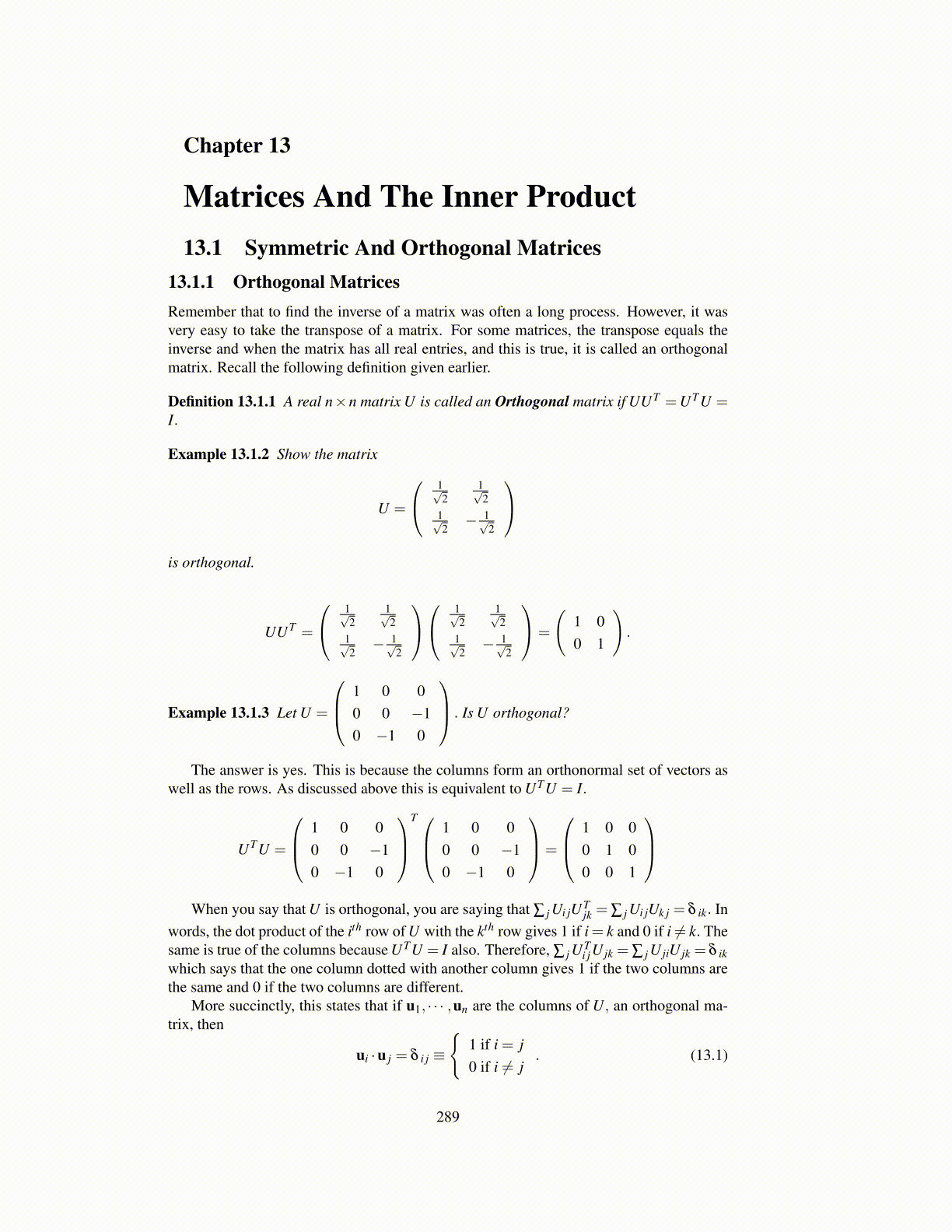
Chapter 13
Matrices And The Inner Product13.1 Symmetric And Orthogonal Matrices
13.1.1 Orthogonal MatricesRemember that to find the inverse of a matrix was often a long process. However, it wasvery easy to take the transpose of a matrix. For some matrices, the transpose equals theinverse and when the matrix has all real entries, and this is true, it is called an orthogonalmatrix. Recall the following definition given earlier.
Definition 13.1.1 A real n×n matrix U is called an Orthogonal matrix if UUT =UTU =I.
Example 13.1.2 Show the matrix
U =
1√2
1√2
1√2− 1√
2
is orthogonal.
UUT =
1√2
1√2
1√2− 1√
2
1√2
1√2
1√2− 1√
2
=
(1 00 1
).
Example 13.1.3 Let U =
1 0 00 0 −10 −1 0
. Is U orthogonal?
The answer is yes. This is because the columns form an orthonormal set of vectors aswell as the rows. As discussed above this is equivalent to UTU = I.
UTU =
1 0 00 0 −10 −1 0
T 1 0 0
0 0 −10 −1 0
=
1 0 00 1 00 0 1
When you say that U is orthogonal, you are saying that ∑ j Ui jUT
jk = ∑ j Ui jUk j = δ ik. Inwords, the dot product of the ith row of U with the kth row gives 1 if i = k and 0 if i ̸= k. Thesame is true of the columns because UTU = I also. Therefore, ∑ j UT
i jU jk = ∑ j U jiU jk = δ ikwhich says that the one column dotted with another column gives 1 if the two columns arethe same and 0 if the two columns are different.
More succinctly, this states that if u1, · · · ,un are the columns of U, an orthogonal ma-trix, then
ui ·u j = δ i j ≡
{1 if i = j0 if i ̸= j
. (13.1)
289